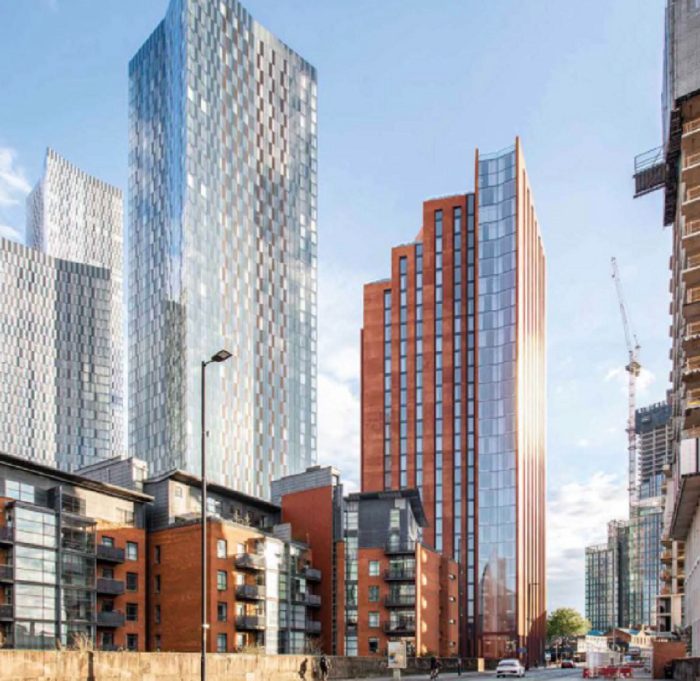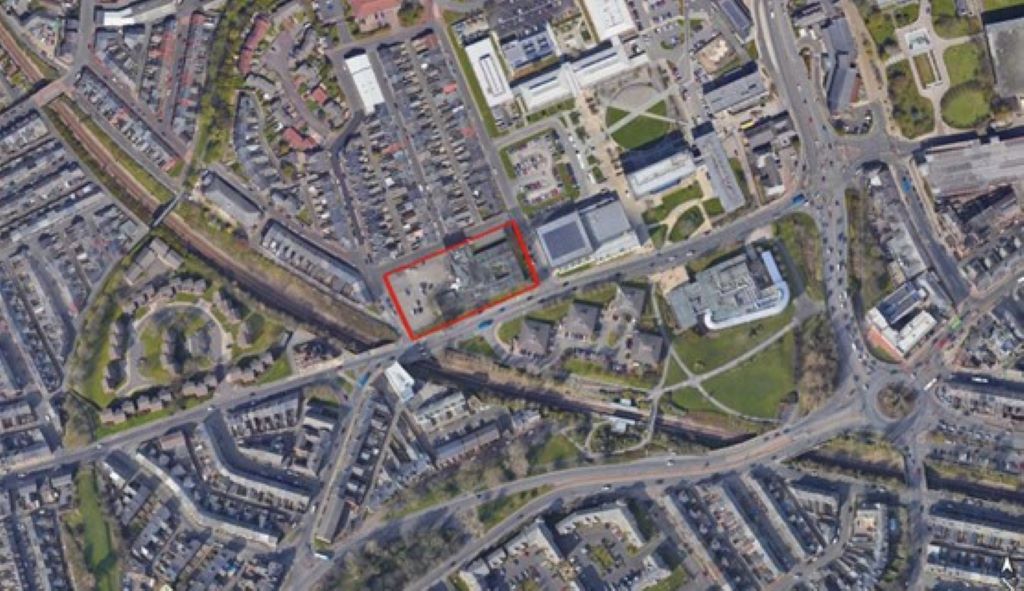IN FOCUS | The Building Safety Act threatens to undermine Labour’s housing ambitions
While undoubtedly necessary, stricter rules around the safety of buildings could stymie the delivery of new homes in Northern cities if lengthy delays obtaining regulator sign-off go unchecked, according to industry figures across the North.
Developers in Northern England are facing project delays and spiralling costs as the built environment sector gets to grips with the Building Safety Act, aimed at improving the safety of so-called high-risk buildings.
It was introduced in response to the tragedy at Grenfell tower, where numerous faults inside and outside of a London tower block led to the deaths of 72 people in 2017.
The BSA is effectively spilt into two parts. One covering existing buildings and another part focussing on new-build development.
In the immediate aftermath of the fire at Grenfell, the focus was rightly on ensuring existing buildings were safe. This meant identifying flammable façade systems and replacing them.
Walk through any city today and you will see residential buildings shrouded in scaffolding and tarpaulin as contractors work to remove and replace defective and dangerous materials.
Government data states that, as of the end of July this year, there are 4,630 residential buildings taller than 11 metres identified to have unsafe cladding. Remediation has begun or completed on around half but work is yet to begin on the other 2,331.
While this data indicates a degree of progress, a recent report from the National Audit Office paints are more worrying picture. The NOA estimates that around 60% of buildings with dangerous cladding are yet to be identified. Next June will mark the eighth anniversary of the Grenfell fire.
Teething problems
It is not just landlords of existing buildings coming under pressure. Shifting policy around what is expected of new buildings has caused an almighty collective headache among the development community.
Among the new rules set out in the BSA is one due to come into force in 2026 that will require all buildings taller than 18 metres to have a second staircase, making it easier for residents to evacuate in the event of a fire.
As well as combustible cladding, Grenfell Tower only had one staircase.
The changes introduced under the BSA have been broadly welcomed by the industry but their implementation has been criticised for lengthening an already drawn-out development process.
Meanwhile, the newly established Building Safety Regulator – the part of Health and Safety England set up to ensure new high-rise buildings are compliant with the act – has come in for criticism for being slow and unresponsive.
Max Meadows, manging director at Project Four, which advises developers on how to navigate the new building safety rules, outlined the extent of the resourcing issues at the regulator’s office.
“We have made 30 gateway two submissions since March and none of them has been signed off yet,” he said.
Gateway two is one of three checkpoints when the building safety regulator must check a scheme is compliant with the act. It comes after planning permission has been secured and before starting on site. Without the green light from the regulator at gateway two, a project cannot progress.
Amy Butler, commercial manager at developer Cole Waterhouse, said she is yet to hear of anyone getting gateway two sign off.
This is alarming news for a developer like Cole Waterhouse, which is pre-development on a 1,000-apartment scheme with five towers in Leeds, and £200m development in Trafford comprising a mix of build-to-rent and student apartments.
“The Building Safety Act is now the number one risk we are trying to tackle at the moment,” Butler said.
It is supposed to take 12 weeks for the regulator to sign off a gateway two application – a service for which developers pay £144 an hour. The average time for approval is around 16 weeks but some developers Place has spoken to have reported delays of up to 24.
“We support the act and what it is trying to achieve but we need clarity and timescales that are not moveable,” Butler said.
The regulator’s capacity struggles are not just impacting developers. Contractors and the wider supply chain are also feeling the pinch, according to Meadows.
“There are a lot of concerns commercially,” he said. “Some specialist contractors could go bust.”

Cities like Leeds [pictured] and Manchester, which have a higher proportion of tall buildings, will be hardest hit by BSA slowdown. Credit: Benjamin Elliot via Unsplash
When contacted by Place North, the Ministry for Homes, Communities, and Local Government said: “The Building Safety Regulator has been building capacity and developing its operations to improve building safety.
“Timelines for processing applications will be met much faster once the new requirements, systems, and processes bed in and the sector has had time to adjust to the new regulations.”
For now, the delay in getting sign off for high rise residential buildings is in “direct conflict” with the government’s crusade to build 1.5m homes over the course of this parliament, according to Richard Glover, partner at law firm JMW.
“It makes it a lot harder for developers,” he said.
“There is an appetite for change, the concern is that there will be a significant period of adaptation to the new regime.”
Glover suggests the teething problems leading to blockages in the approval process have been caused by poor planning.
“The rules of the Building Safety Act were probably rushed through a bit too quickly but something needed to happen so it is a balancing act,” he said.
“There is lots of uncertainty about how you comply.”
This confusion is frustrating developers eager to get on site.
One Manchester-based developer of high-risk residential buildings – defined as those taller than 18 metres – said that knowing exactly what information the Building Safety Regulator wants to see as part of the three-stage compliance process is “like shooting in the dark”.
The developer, who did not want to be named, also said the industry is “heading for a bottleneck” if resourcing problems at the regulator are not sorted out quickly.
“If you’re not getting approval, it is costing you millions because your teams are just stood around waiting,” he said.
The lack of clarity around information the BSR requires is borne out in the stats.
By 16 September, the regulator had received 808 applications for building control approval on higher-risk building projects. More than 40% of these were rejected due to missing information or a lack of compliance with regulation.
“There is still a question mark over the level of design detail that needs to be submitted [to the BSR],” Meadows said.
“Project Four has set a clear stance that full design information should be provided – with sub contractor design input required especially for anything structural, fire or life safety related.”
A spokesperson for Health and Safety England, where the regulator sits, said developers can “mitigate their risk of costly delays or potentially higher borrowing costs” by submitting “high-quality building control applications”.
“A high-quality application should clearly identify every aspect of compliance and clarify the standard and codes the building’s design complies with,” the HSE spokesperson said.
“It should justify compliance with a supporting narrative. This helps BSR avoid further interpretation.”

Fusion’s Manchester student scheme (right) is one of several to go back for a redesign to add in a second staircase. Credit: via planning documents
Funding foibles
Gateway two approval delays are making it more difficult for developers to access funding.
The economic volatility of recent years means funders are more risk averse than ever and are often unwilling to invest in a project until a build contract is signed.
Having to hold out for funding is increasing the strain on developers and multiplying up-front costs.
The BSA and the need to provide more detailed design earlier on in the process to satisfy the regulator is also preventing developers from getting the best price for a job, according to some.
“We are being forced to get into bed with one contractor from day one,” one said.
“Funders want zero risk. The BSA is putting more risk on us.”
While some developers view the requirement for early contractor engagement as a barrier to getting the best price for a job, Pete Connolly, managing director of Igloo Regeneration, sees things differently.
“We have found that working closer with contractors works better for us,” he said. “If you have the right approaches to procurement, you will get the right price.”
Connolly, whose firm is behind the 1,000-home Riverside regeneration scheme in Sunderland and the £137m Founders Place in Newcastle, acknowledges “teething problems” with the current system but does not see the sense in getting worked up about it.
“It is easy to be doom and gloom but it is what it is,” he said.
“When people are used to it in five years’ time this will all be forgotten about.”
It is not just development finance and forward funding deals that developers are having to work harder for. Grant funding is also an issue.
Cash needed to bridge viability gaps has to be spent in line with government timescales.
The Building Safety Act is making it more and more difficult for developers to meet those deadlines.
In September, the Greater Manchester Combined Authority had to reallocate £21m of brownfield grants due to “significant slippage” in the programme of some schemes. Some of that slippage was due to BSA delays, the GMCA confirmed.
Tight margins
A lethal mix of high build costs and low values means viability across the North is razor thin even before you factor in any changes that might need to be made to make a scheme BSA compliant.
Reworking projects to accommodate second staircases – which several developers in Manchester have done in recent months – can impact viability significantly, according to Marcus Dixon, head of UK residential research at JLL.
Reducing the number of units, even slightly, or turning a few two-bed flats into one-beds to accommodate a second staircase can be the difference between a green number and a red one on an appraisal.
“A lot of schemes that were on the cusp of being viable are now being put in the ‘too difficult box’,” Dixon said.
The result of the need to comply with the BSA, high interest rates, construction cost inflation, and the additional outlay required to meet sustainability targets, mean that some projects may never see the light of day.

Angela Rayner’s goal of 1.5m homes is being put under pressure by the BSA. Credit: Lauren Hurley, No10 Downing Street
This is bad news for the government, which was elected on a housing ticket and has pledged to deliver 1.5m homes over the next five years.
If this target is to be met, concessions might have to be made, according to Phil Doyle, director at 5plus Architects.
“It is tight out there,” he said, highlighting how construction costs have increased across the board in recent years, not just for high-risk buildings.
“At West Bar [a 100,000 sq ft office building in Sheffield] we ended up getting that done at around £190/sq ft. Things are now being priced at £260/ sq ft.”
Doyle believes the need to comply with the BSA, and the additional cost that brings, could result in other noble pursuits being put on the back burner.
“[Developing sustainable buildings] is a matter of life and death because the planet is heating up but the BSA has come at the same time and will water down some of the environmental stuff,” he said.
“There is a balancing act with it all. Where do you provide the concessions? The BSA is now absolute and it means that some of the targets on energy will come under pressure.”
Any slowdown in new-build residential development as a result of the BSA will stymie supply of much-needed homes, driving already climbing rents upwards in cities like Manchester, Leeds, and Newcastle and putting a dent in the government’s lofty housing ambitions.
The increased costs associated with meeting the requirements of the BSA – both during design and construction – could also mean a knock-on effect for the delivery of affordable homes.
If a scheme is already marginal in terms of its viability, developers could argue that delays and increased costs associated with the BSA mean they are unable to deliver a policy compliant level of discounted homes, putting local authorities in a sticky spot when it comes to determining applications.
Time to choose
This new way of working provides a long-overdue shift in thinking that prioritises the safety of residents above all else. The hope that underpins this change is that Grenfell will be the last tragedy of its kind in the UK.
However, the adjustment period is proving painful for the development and construction industry at the same time it is being asked to help the government reach its ambitious housing targets.
More and safer homes is the aim. The government may have to just settle for the latter.





